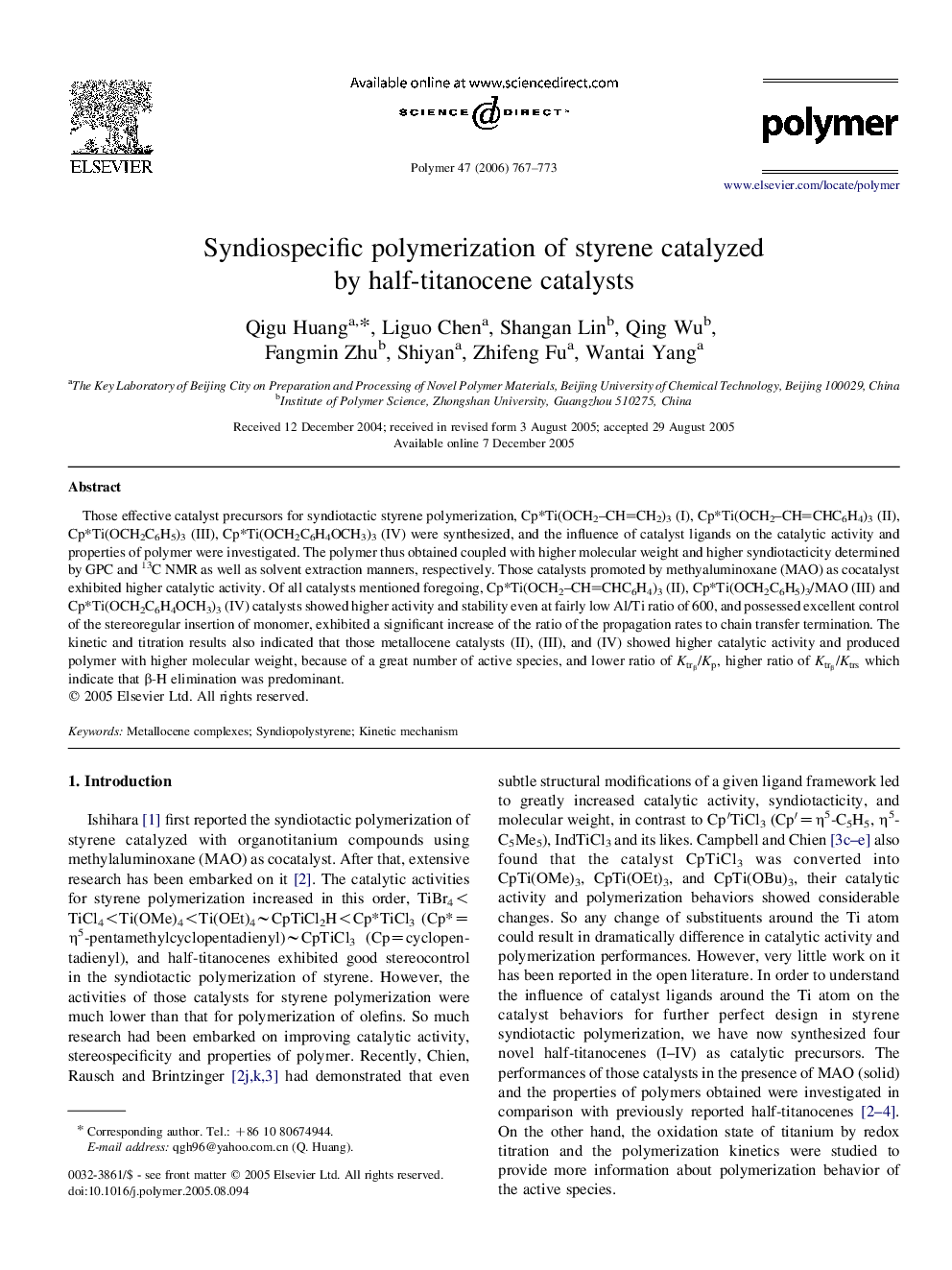| Article ID | Journal | Published Year | Pages | File Type |
|---|---|---|---|---|
| 5189429 | Polymer | 2006 | 7 Pages |
Abstract
Those effective catalyst precursors for syndiotactic styrene polymerization, Cp*Ti(OCH2-CHCH2)3 (I), Cp*Ti(OCH2-CHCHC6H4)3 (II), Cp*Ti(OCH2C6H5)3 (III), Cp*Ti(OCH2C6H4OCH3)3 (IV) were synthesized, and the influence of catalyst ligands on the catalytic activity and properties of polymer were investigated. The polymer thus obtained coupled with higher molecular weight and higher syndiotacticity determined by GPC and 13C NMR as well as solvent extraction manners, respectively. Those catalysts promoted by methyaluminoxane (MAO) as cocatalyst exhibited higher catalytic activity. Of all catalysts mentioned foregoing, Cp*Ti(OCH2-CHCHC6H4)3 (II), Cp*Ti(OCH2C6H5)3/MAO (III) and Cp*Ti(OCH2C6H4OCH3)3 (IV) catalysts showed higher activity and stability even at fairly low Al/Ti ratio of 600, and possessed excellent control of the stereoregular insertion of monomer, exhibited a significant increase of the ratio of the propagation rates to chain transfer termination. The kinetic and titration results also indicated that those metallocene catalysts (II), (III), and (IV) showed higher catalytic activity and produced polymer with higher molecular weight, because of a great number of active species, and lower ratio of Ktrβ/Kp, higher ratio of Ktrβ/Ktrs which indicate that β-H elimination was predominant.
Related Topics
Physical Sciences and Engineering
Chemistry
Organic Chemistry
Authors
Qigu Huang, Liguo Chen, Shangan Lin, Qing Wu, Fangmin Zhu, Shiyan Shiyan, Zhifeng Fu, Wantai Yang,
